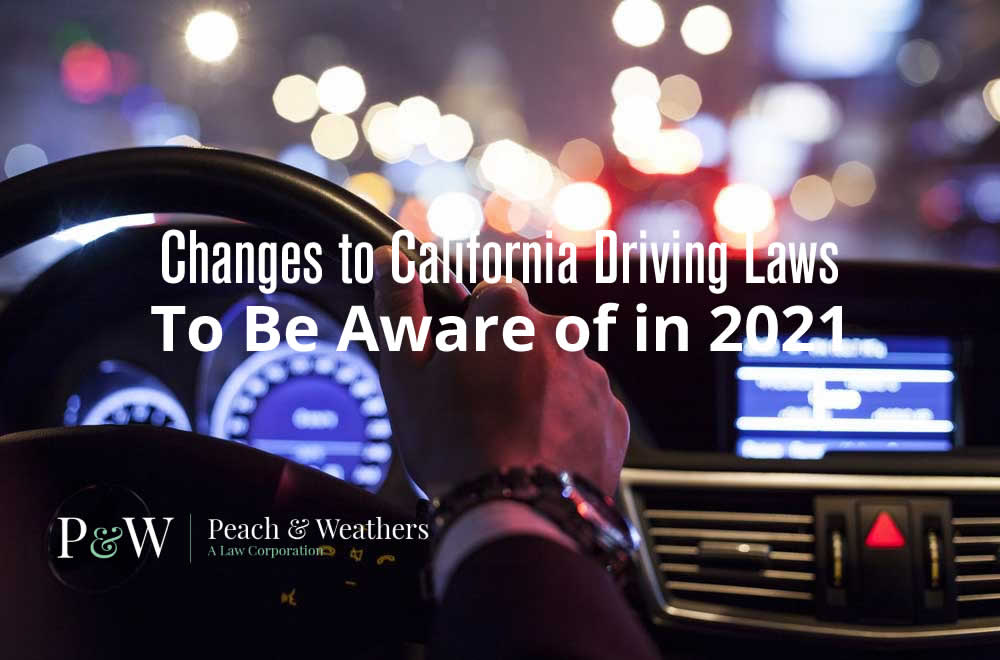
Driving is a very large aspect of modern society, as people rely on cars for transportation to work, entertainment venues, shopping centers, food services locales, and more. In fact, in 2019, the AAA Foundation for Traffic Safety found that, on average, Americans spent a total of over 70 billion hours driving throughout the year. Over 200 million licensed drivers are living in the country. With so much of our time spent behind the wheel, it is absolutely critical to be familiar with all the area's current traffic laws.
When first obtaining your driver’s license, you’re required to demonstrate your knowledge of the various laws and regulations related to driving via a written exam and a skills test. However, over time that knowledge can sometimes be forgotten. To further complicate matters, these laws vary from state to state and often are amended from year to year. Lack of awareness concerning a law change won’t prevent you from getting in trouble with local law enforcement, so it’s vital that you continually stay up to date with any changes that might affect you to avoid facing severe traffic charges.
This brings us to the most recent change to driving laws in California, as a result of Assembly Bill 47.
What Is Assembly Bill 47?
This bill, which was authored by California State Assembly member Tom Daly, was initially presented in 2018, after which it went through various stages of being read and amended. In 2019, it unanimously passed by the Assembly and the California State Senate and was signed into law by Governor Gavin Newsom. The purpose of the bill was to increase the penalties for distracted driving, specifically distracted driving resulting from phone usage.
Given the fact that distracted driving is a leading cause of car accidents, it should be no surprise that this is not the first time California has passed new laws to curtail such behavior. For starters, in 2008, the usage of handheld wireless phones while driving was banned. In 2009, texting was specifically banned as well. In 2017 drivers were prohibited from holding a cell phone while driving outside of singular taps or swipes, compelling them to rely more heavily on hands-free technology instead. At present, violating these laws can result in having to pay a fine.
Assembly Bill 47 introduces one additional penalty for said violations. Drivers that fail to appropriately use their phone in a hands-free fashion can have a point added to their driver’s record.
How Does This Work?
The existing consequences of using a mobile device while driving still apply, meaning that drivers will still have to pay a fine for violating the law. Where Assembly Bill 47 becomes relevant is in situations where the driver commits a repeat infraction, meaning that they are again charged with the same traffic violation. If this happens within 36 months of the initial incident, they receive a point on their driver’s record. This continues to apply indefinitely, meaning that if within the next 36 months the driver violates the law by using their phone once more, they will receive another point on their record, and so on.
Why Is This Important?
The California DMV utilizes a point system to track the amount and severity of driving infractions committed by individuals in the state. When someone commits a significant violation, they receive a point on their driving record. Once a maximum number of points has been reached, the driver is categorized as a “negligent operator” by the system. Their driver’s license is suspended or revoked. The maximum number is determined as follows: 4 or more points within 12 months, six or more points within 24 months, or eight or more points within 36 months.
Some examples of other infractions that can result in points added to your record include going over the speed limit, failing to stop at a traffic light, failing to signal before changing lanes, causing a traffic accident, driving under the influence, and more.
When Does This Change Take Place?
While the law was approved in 2019, it is set to become effective on July 1st of 2021. This is to provide enough time for lawmakers and citizens to familiarize themselves with the change prior to it being enforced. If this is something you have struggled with in the past, now is the time to start practicing strategies to avoid engaging in distracted driving. After July 1st, drivers who continue to engage in the behavior described in the bill will face the applicable penalties.
Stay Up to Date on California Driving Laws With Peach & Weathers
Every year comes with a number of changes and updates relating to driving laws in the state of California, and it can be difficult to ensure you continually have access to the most current information. That’s why at Peach & Weathers, we can assist with any questions you might have on the subject. With over 60 years of experience with California law, our team is well prepared to clarify any detail or concern. For a free consultation, simply contact us online, or give us a call at 909-442-4725.

